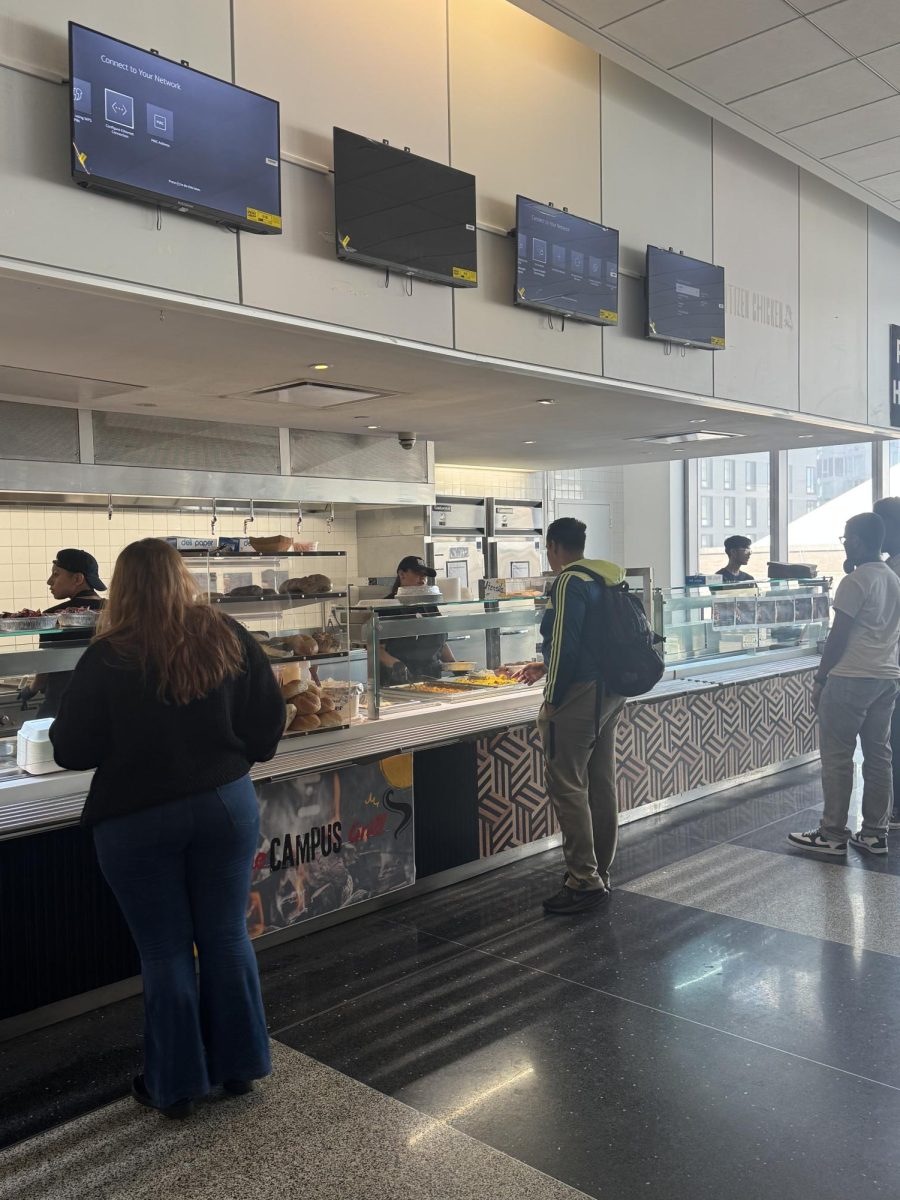Students at John Jay juggle classes, clubs, athletics, jobs, and home responsibilities. For some, hectic schedules can prevent even a quick trip to the store for a snack, or a caffeinated drink.
For hungry or sleep-deprived students in a pinch for time, on-campus vending machines are often the solution.
John Jay has numerous vending machines throughout campus, and while students say they are conveniently located, students have noticed that items tend to be priced higher than they are used to paying.
John Jay senior Max Bardalez said that he avoids purchasing items from the vending machines that he has never used a one in the four years he has attended John Jay College.
“I just go to the bodega across the street,” he said. “A can of coke and a bag of chips is the same price as just one thing from the machine,” said Bardalez.
G&G Deli and Grocery, just a short walk from campus, offers a bottle of water for $1.50. The cheapest water bottle in the vending machines is $2.40.
Candy bars that cost $2 at G&G are $2.60 in John Jay’s vending machines.
Almost every item in the machines can be found at a nearby deli or pharmacy for less.
Sadam Aldawhary, a cashier at G&G, claimed the high prices in the machines are good for their business, because they drive students to shop at G&G.
“Why would you pay more for the same thing? All of the students should come here,” said Aldawhary.
While the machines themselves are expensive, and cost money to operate and maintain, there are other factors that are reflected in the prices.
Martin Sturla, CUNY’s Chief Procurement and Supplier Diversity Officer, wrote in an email that CUNY takes a 29% commission of gross sales from the machines.
This commission was established in 2015, as a part of CUNY’s 10-year contract with Canteen Vending, the current operator of the vending machines across CUNY campuses.
When a student buys a granola bar for $3, they are giving almost $1 to the university.
Since the vending machine company sets prices, the commission given to CUNY directly affects what students are paying.
Shaynell Getty, a student, Lloyd Sealy Library attendant, and frequent customer of the vending machines on campus, believes that the commission CUNY receives from the vending machine is not fair to students.
“It’s not right,” she said. “Especially since we’re already paying for books, tuition, and other stuff like that,” said Getty.
Jessica Sosa, an economics major and regular visitor to the vending machines, also said that the cut that CUNY takes isn’t fair, especially considering the fees she already pays.
“On the tuition receipt, there is a charge that just says ‘Fees’ and another one for ‘Books and Supplies,’” she said. “I’ve never gotten a book given to me in a class.”
According to Sturla, the vending machines will change soon, but it might not be the kind of change that students want.
When the operational contract CUNY holds with Canteen Vending expires this year, the administration will be choosing a new vendor.
Sturla acknowledged that while the price of items will be taken into consideration, the decision making process is complex.
Among factors such as maintenance, product selection, health, and sustainability, Sturla said that the commission percentage offered to CUNY will be important when they make their selection.
The larger the cut for CUNY, the higher the prices charged to students.
Vending companies need to ensure they keep up with costs and still return a profit for themselves, so any percentage of sales taken by CUNY is reflected in the prices marginally.
In addition to the commission percentage, Sturla said that companies will offer signing bonuses to CUNY, and the amount that is offered will play a role in their selection.
This bonus is another factor encouraging CUNY to pick a vendor based on how much money is offered to them, which can incentivize companies to charge higher prices to compensate.
The extra money that students pay at the vending machine supports CUNY, but the markup encourages some students to spend their money elsewhere.
New vending machines, or a new contract, are coming soon, but it remains to be seen if high prices will become a thing of the past.








